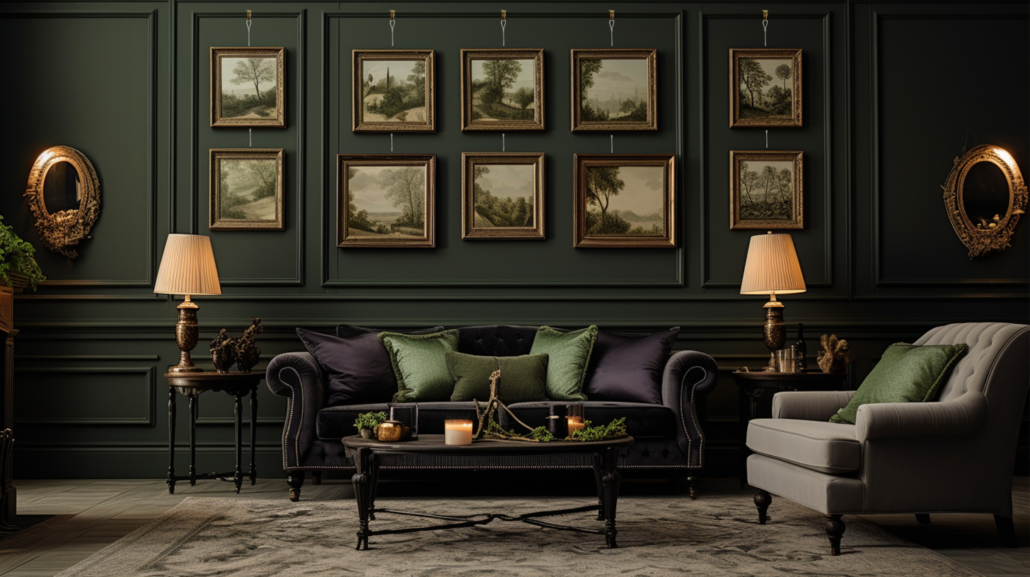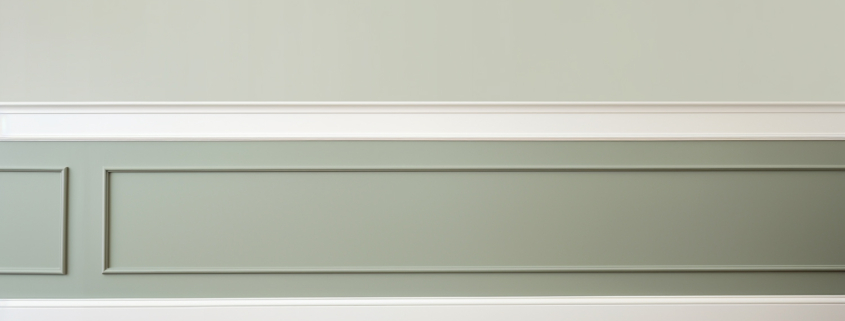Custom Millwork and Moulding – Get a Better Understanding of Wood Trim Profiles
The look of your home is important – after all, you spend a lot of time there!
So, it stands to reason that you should love every bit of it – from the interior doors to the wood trim profiles. While it may seem like splitting hairs, your crown moulding, baseboard and casing deserve the same kind of attention and love as any other part of your home. And, we promise that updating (or upgrading) your millwork accents will make more of an impact than you ever thought possible.
While settling for any old molding profile may be the norm, your home is your home and it doesn’t have to be cookie-cutter. Why not customize it the way you want? After all, if the wood species of your floors clashes with your existing wood mouldings, it can end up driving you crazy.
To make your home reflect your style from top to bottom, custom millwork and unique moulding profiles are key.
Custom Moulding and Millwork by the Experts
Mouldings aren’t just a small design feature to us – they’re a way of life. Baird Brothers has been in the custom millwork and moulding industry for generations, and we are craftsmen who help take your home design to the next level.
In addition to thousands of in-stock profiles, we also offer special order products and can design 3D-printed samples for you to compare mouldings before you make a purchase. Whether you’re ordering one piece of dentil moulding or an entire house full of custom trim, we’re ready to make your dream home come to life.
Follow along as Ben Baird, third generation, and Steve Stack talk over our process.
Is There Really a Difference Between MDF and Hardwood?
Short answer – ABSOLUTELY! While we offer MDF as an option, we create and specialize in hardwood products because we know they’re superior. If you’re not familiar with MDF (medium-density fiberboard), it’s simply an artificial wood product made from wood fibers and resin. It is a common builder-grade option that tries to mimic the look of painted trim.
There are downsides to this lower-cost option, though: it’s weaker, it absorbs water, it can be difficult to install (especially if you’re doing it on your own), it delivers a more generic look, and it releases VOCs (gasses) when manufactured
Hardwood mouldings, by comparison, can be fully customized, last a lifetime and can be painted or stained. At Baird Brothers, we even offer finger-jointed primed poplar mouldings, which are comparable to MDF in their painted appearance but offer a much more durable, installation-friendly design. See the difference for yourself.
Common Moulding Types
Homeowners have plenty of opportunity when it comes to incorporating custom moulding into interior design – after all, it’s literally everywhere you look! The following list includes the common types of trim and moulding that you likely have in your home and can upgrade (either piece by piece or all at once).
Baseboard
Also known as base moulding, this type of moulding covers the gap between your wall and flooring. Baseboard is typically finished with quarter round or shoe moulding to complete a seamless transition from floor to wall.
Crown Moulding
Crown moulding runs along the ceiling and the wall and is applied at an angle. You can add extra moulding below crown moulding and paint it all the same color for a more decorative, one-of-a-kind look.
Window Casings
Window mouldings are used to cover the gaps between your windows and the walls. They add some additional structural support while letting your own personal style shine through.
Door Jambs and Mullions
Jambs are individual sections of a door frame that are visible and should always be addressed – they consist of a head jamb and side jambs. When you’re combining two doors or a door and window, a mullion (often referred to as a mull) is used to make a seamless transition from piece to piece while covering any gaps.
Threshold and Transition Strip Mouldings
If your flooring transitions from one wood species to another, a different kind of material, or is simply laid at a different angle from room to room, thresholds and transition strips act as a go-between for flooring materials.

Chair Rail Moulding
Chair rail moulding runs around the room, level with the usual height of a chair. This type of moulding can be placed above wainscot paneling or on its own, and its purpose is to protect the wall from being damaged by the backs of chairs when you move them. But, just because they have a practical purpose doesn’t mean they can’t also look good.
Shoe and Quarter Round Moulding
Shoe and quarter round mouldings work in tandem with baseboard to make an attractive transition between the floor and the wall.
Plinth Blocks
Plinth blocks are decorative elements that connect vertical and horizontal door/window trim pieces.

Picture Rail Moulding
This kind of moulding is a little old-school, but can allow you to create a unique “showroom” space in your home. During the Victorian era, picture rail moulding was commonly placed horizontally along the wall to align with the tops of windows. With this type of moulding, you can easily hang picture frames from it without having to damage the wall with nails.
Backband Moulding
If you want to add some thickness to your baseboard or window casing, you can use backband moulding. Also referred to as backband casing, it delivers additional dimension when added to the outer edge of existing trim.

Wainscot Panel Moulding
You can create the impression of paneled walls by using panel mouldings as a decorative feature in your home. Most recently, shiplap panel moulding has blasted onto the home design scene, and it doesn’t look to be going anywhere anytime soon!
Base Cap
Like back band moulding, base cap is used to build dimension. Base cap gives your baseboard moulding a more layered look.
Trending Trim Options and Moulding Profiles
The past decade or so was largely driven by builder-grade and MDF moulding profiles, but a quick look at Houzz or Pinterest will tell you that custom mouldings are today’s go-to.
The reason is simple. Custom (or unique) mouldings make your home feel more upscale and add value. Ten years ago, the thought of purchasing custom moulding might have been scary, because you couldn’t see or touch the actual profile until it was produced. Needless to say, times have changed! (Thank you, 3D printing!)
Today’s new technologies have allowed numerous industries to evolve – including the hardwood lumber sector. Now, interior designers, architects and even homeowners benefit from the “try before you buy” option of 3D printed samples for everything from crown moulding to baseboard.
So, what are some of today’s most popular, trending moulding profiles and designs?
1. Contemporary Baseboard
Of course, elaborate trim and baseboard designs will always be in style, but sleek, modern angles have taken the market by storm. Think stepped profiles, simple custom angles and modern built-up designs.
2. Contemporary Shoe Mould
You can’t have new, modern baseboard without considering the need for custom shoe mould. Designers are opting for elements that mimic the angles and look of the newly installed baseboard.
3. Feature Walls
Shiplap, wainscot, picture frame details, you name it. Feature walls are all over the place, and best of all, really anyone can install them – from social influencers and DIYers to experienced builders. Popular feature walls include floor-to-ceiling frames, diagonal wood designs, shiplap (painted or stained) and flat panel wainscot.
4. Shiplap Ceilings
Shiplap isn’t just for the walls. With the increase in popularity, more and more people are looking for unique applications for this on-trend material. Going for a light, airy beach feel? Or have a cabin retreat that needs a facelift? Consider painted or light-stained shiplap!
How Do I Order Custom Moulding Profiles?
Custom mouldings aren’t just for the rich and famous. The ordering process is simple.
First step – reach out to a manufacturer like Baird Brothers Fine Hardwoods to chat about the moulding profile you’re looking for (you don’t need to be a woodworking professional to do this). Our versatile machinery and well-developed expertise make cutting custom profiles simple.
Second step – request a 3D printed sample (if you need to see it before you buy), or bring in any existing custom trim that you’d like to match.
Third step – choose a wood species, and find one that complements your design – this is essential if you’re trying to match wood tones in your home.
Fourth step – install and enjoy!
Get Your Moulding Profiles From the Best of the Best
If you want to love your home down to the very smallest details – from the wood doors to the wood trim profiles – then you need to work with the best materials. That’s why Baird Brothers offers customizable mouldings in a variety of wood species (cherry, hickory, poplar – you name it!).
If you’re looking for some stunning custom moulding profiles and precise, expertly made custom millwork, then shop our online store or contact one of our dedicated sales representatives. We’ll help you build a home you can love for life.



